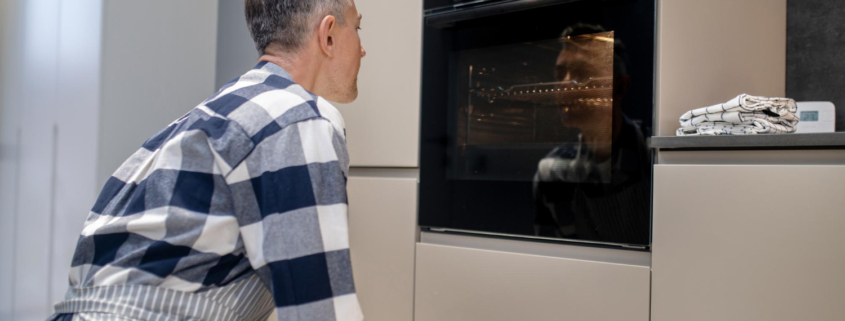Is Your Oven Not Heating Properly? Troubleshooting Tips
Imagine preheating your oven for a big dinner, only to discover it’s not heating properly, leaving your meal plans in the lurch. This common frustration can arise at the most inconvenient times, leading to spoiled meals and wasted time. An oven that won’t heat can stem from various issues, making it crucial to pinpoint the exact reason to prevent further damage. Whether it’s an electric oven struggling with power issues or a gas oven with a faulty igniter, identifying the problem can be a game changer.
Getting to the bottom of why your oven isn’t heating properly involves a few systematic checks. By understanding the root cause, you can make informed decisions about whether to tackle a small issue yourself or call in an oven repair technician for more serious problems. Let’s explore some practical ways to troubleshoot and address this issue effectively.
Check the Power Supply
An often overlooked but common cause of an electric oven not heating is a power supply issue. Start by verifying that the oven is securely plugged into the outlet. A loose plug might interrupt the flow of electricity. Next, take a brief look at your home’s electricity situation:
– Find the circuit breaker and confirm that it hasn’t tripped. If it has, reset it and check if the oven resumes heating.
– Inspect the fuses. If any are blown, replacing them might restore power to your oven.
If these steps don’t solve the problem, it may signal an underlying electrical issue. In such cases, it’s smart to contact a technician with experience in handling appliance repairs. They can safely diagnose and resolve electrical issues, ensuring your oven starts working reliably again. Ignoring these power-related concerns can lead to bigger problems, so addressing them promptly is wise.
Inspect the Heating Element
When your electric oven isn’t heating, the heating element itself might be the culprit. Visually inspect the element, checking for any visible breaks, burns, or discoloration. Here’s how you can delve deeper:
- Ensure the oven is switched off and unplugged to avoid any electrical hazards.
- Look closely at the element for any visible damage.
- If it’s still not heating, using a multimeter to test for continuity can confirm if the element is capable of conducting electricity.
Before attempting any replacements, consider how comfortable you are performing these tasks. If you’re uncertain, it’s best to reach out to an oven repair technician. Proper diagnosis and replacement require precision and understanding, ensuring your appliance returns to peak performance without causing additional issues.
Examine the Oven Thermostat
The thermostat plays a key role in ensuring your oven maintains the right temperature. If your oven isn’t heating, a faulty thermostat might be the root of the problem. It measures the oven’s internal temperature and signals the heating elements to turn on or off when necessary. A malfunction could result in temperature inconsistencies or no heat at all.
Start by running a simple test: Set your oven to a specific temperature and use an oven-safe thermometer to verify if it reaches that level. If there’s a noticeable difference, the thermostat might be faulty. Usually, this component is inside the control panel. While it’s possible to access and test, it’s often best left to professionals, as handling electrical parts can be tricky. If the test shows issues and you aren’t comfortable with DIY repairs, a technician can handle the replacement with ease.
Check for Faulty Igniters (for Gas Ovens)
If you have a gas oven, the igniter is crucial for lighting the gas to generate heat. When it fails, you might find no flame, or the oven won’t heat to the right temperature. Here’s how you can identify a faulty igniter:
– Listen for a clicking sound when you attempt to light the oven. No sound typically means the igniter isn’t functioning.
– Observe whether the gas ignites at all. If there’s a gas smell but no flame, the igniter might need attention.
For safety reasons, working with gas appliances requires caution. If you suspect the igniter is faulty, the safest route is to seek help from an expert. They have the skills and understanding to address gas-related issues without risking further complications.
Inspect the Oven Control Board
The control board is like the brain of your oven, managing its various functions. When there’s a glitch, it can lead to erratic heating or no heating. Symptoms might include unresponsive controls or inconsistent temperatures. Here’s a basic way to troubleshoot:
– Reset the oven by unplugging it for a few minutes and then plugging it back in. This might solve minor software hiccups.
– If problems persist even after a reset, it might indicate a more complex issue.
Given the complexity of the control board, these repairs often require a technician’s touch. The board’s intricate electronics are best handled by those familiar with such components to ensure it’s safely restored or replaced.
Final Thoughts and Next Steps
Addressing why an oven isn’t heating involves many factors, from checking the power supply to testing intricate components like the control board. Every step helps narrow down the potential issues and move closer to a solution. Regular maintenance can help prevent these problems from recurring, which is ideal for keeping your kitchen running smoothly.
So, whether it’s a simple reset or something more complex, knowing when and where to seek professional assistance can save you time and hassle. It’s all about ensuring your oven stays in top working condition, ready for any culinary adventure you embark upon next.
Ovens are complex appliances, and repairing them safely can be quite the task. If you’ve worked through the troubleshooting steps and still face issues, consider reaching out to a trusted expert for help. Learn more about how an oven repair technician can diagnose and restore your oven’s functionality. With GilTech Appliance Inc’s skilled service, you can ensure your oven operates smoothly, letting you enjoy your kitchen activities without a hitch.











